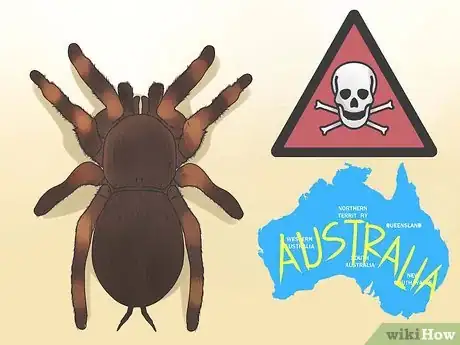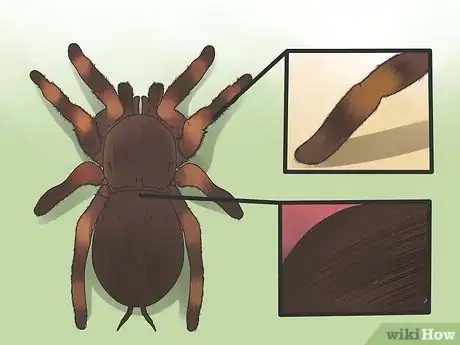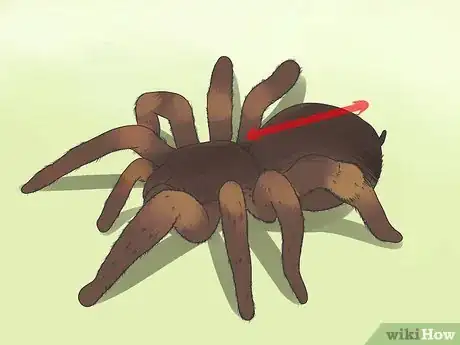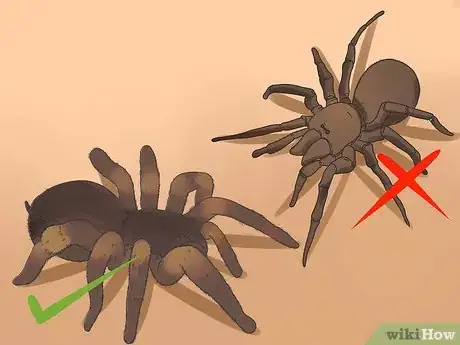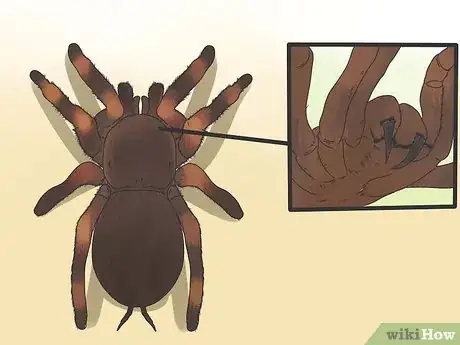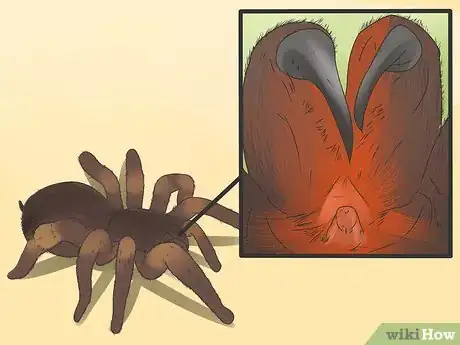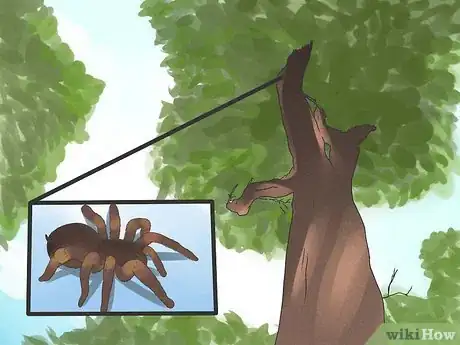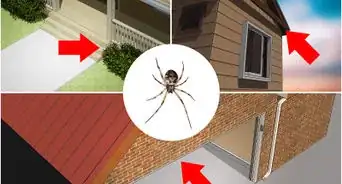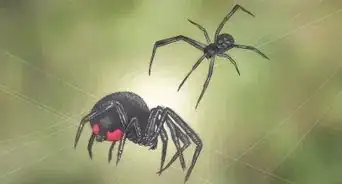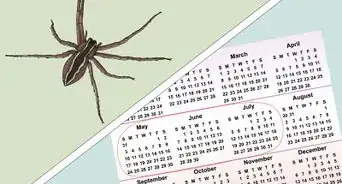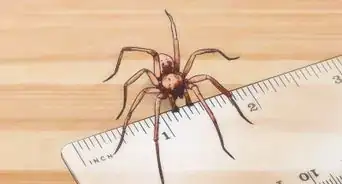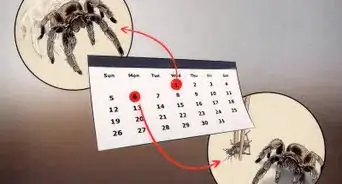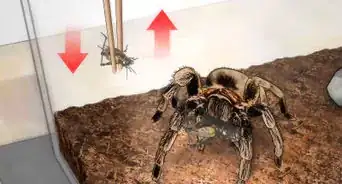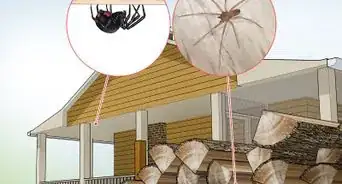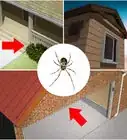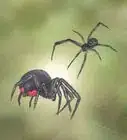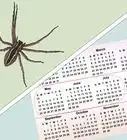wikiHow is a “wiki,” similar to Wikipedia, which means that many of our articles are co-written by multiple authors. To create this article, 20 people, some anonymous, worked to edit and improve it over time.
There are 9 references cited in this article, which can be found at the bottom of the page.
This article has been viewed 87,138 times.
Learn more...
Tarantulas (Theraphosidae) are among the largest spiders in the world. They are a member of the primitive group of spiders known as Mygalomorphae. Although many people consider tarantulas to be hairy and scary, it may surprise you to know that some people love them so much that they keep them as pets, and some people even eat them for dinner. Tarantulas can be found on every continent except Antarctica. This article explains how to tell tarantulas apart from other types of spiders.
Identifying a Tarantula Spider
Tarantulas are mainly brown and black, but several species are far more colorful. The following characteristics are common to most species of tarantulas (or spiders in general):
-
1Look for a very large, hairy body and hairy legs. However, some adult tarantulas can be less than 0.5 centimeter (0.2 in).[3]
- The body length and height can be up to 3” (76 mm).
- The leg span can be as much as 3 to 5” (76 to 127 mm).
-
2Check for a red-brown to black color; most tarantulas don’t have obvious markings. However color is extremely variable, and many other distantly related spiders are the same colour as many tarantulas.[4]
-
3Observe the form. A tarantula like all spiders has a frontal segment (opisthosoma) connected through a narrow waist to the abdomen which is oval-shaped.
-
4Look for a single small group of typically eight eyes on the forehead, but all tightly clustered onto a single mound, not like shown here. This would be a huntsman. Another often confused are Wandering spiders, where two of the eight eights are lower down and closer to the mouth parts than the remaining eyes
-
5Look at the features of the mouth area; there are two backward-pointing fangs just below the eyes and 2 pedipalps (leg-like appendages) near the mouth. The direction the fangs bite can be very diagnostic - if biting 'backwards' (paraxial) then this reduces the possible identity to just several broad groups (spider families) which includes tarantulas.
-
6Notice the fangs; tarantula’s fangs (and in other close families) move up and down (paraxial), whilst all other spider’s fangs move horizontally (axial) to pinch.
Recognizing Tarantula Spider Habitats
Tarantulas don’t spin webs; most live in burrows underground. They use their fangs to dig the burrows. However, you can also sometimes spot tarantulas in other places.:
-
1Look for tarantulas in trees as well as under tree roots.[5]
-
2Examine rock cliffs for makeshift tarantula burrows.
Community Q&A
-
QuestionIs there a significant difference in size between male and female tarantulas?
 Community AnswerIt depends on the species.
Community AnswerIt depends on the species. -
QuestionHow much does a tarantula cost?
 Community AnswerThis depends on the species. More common tarantulas will cost around $30, but rarer tarantulas can cost up to $200.
Community AnswerThis depends on the species. More common tarantulas will cost around $30, but rarer tarantulas can cost up to $200. -
QuestionCan I kiss a spider?
 Community AnswerNo. It is very dangerous to kiss a spider if they are venomous. Do not attempt to do this.
Community AnswerNo. It is very dangerous to kiss a spider if they are venomous. Do not attempt to do this.
Warnings
- The Goliath bird eater tarantula from South America is the largest, if not hairiest, of the species (about the size of a dinner plate), but it is not deadly. African, Asian, and Australian tarantulas have more potent venom than American species, though none are regarded as deadly.⧼thumbs_response⧽
References
- ↑ https://www.livescience.com/39963-tarantula.html
- ↑ https://www.desertmuseum.org/kids/oz/long-fact-sheets/tarantula.php
- ↑ https://www.pestwiki.com/tarantulas/#1_Body_Structure_and_Size
- ↑ https://texasinsects.tamu.edu/tarantula/
- ↑ https://animals.sandiegozoo.org/animals/tarantula
- ↑ https://www.youtube.com/watch?v=vI9-7cSH1oA
- Herbert and Lorna Levi, Spiders and Their Kin, (New York, NY; St. Martin’s Press 2002)
- Lorus and Margery Milne, Audubon Society Field Guide to North American Insects & Spiders, (New York, NY: Alfred A. Knopf, Inc. 1980)
- Al David, Tarantulas: A Complete Introduction, (Neptune City, NJ; T. F. H. Publications, Inc. 1987)
